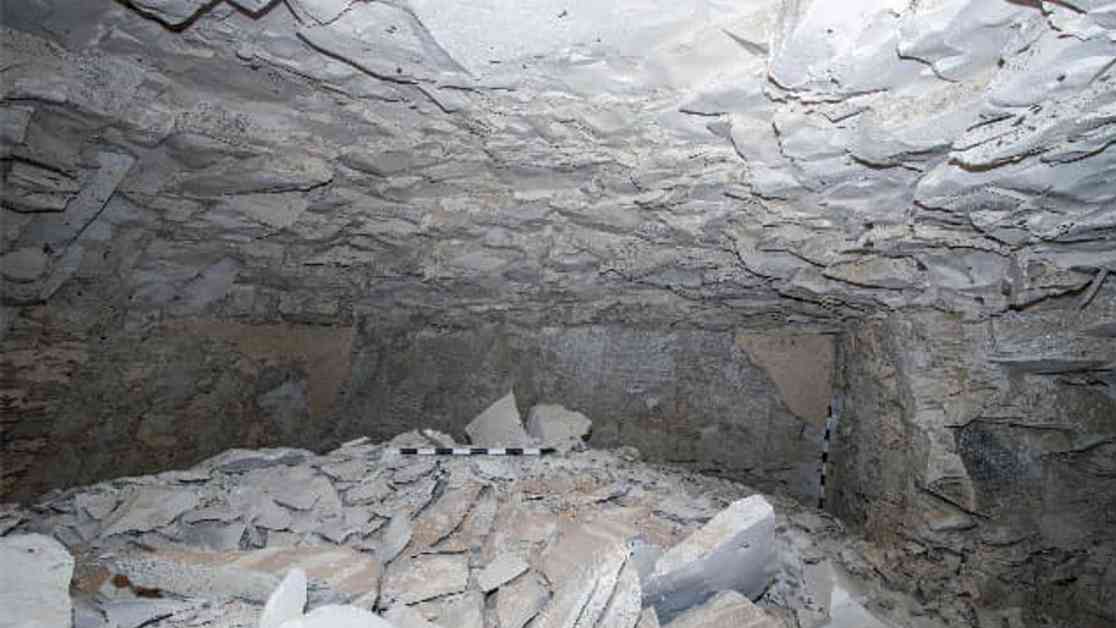A Remarkable Unearthed Discovery: The Tomb of Pharaoh Thutmose II
In a monumental find that has stunned the archaeological world, the tomb of an Egyptian pharaoh has been unearthed for the first time since the discovery of Tutankhamun in 1922. This groundbreaking discovery marks the culmination of years of dedicated research and excavation, shedding new light on ancient Egyptian history and unraveling mysteries that have puzzled experts for centuries.
The tomb of Pharaoh Thutmose II, the final missing royal tomb of the 18th dynasty, was recently unearthed in the Western Valleys of the Theban Necropolis in Egypt. This extraordinary find was made possible by a collaborative effort between a joint British-Egyptian mission, located approximately 1.5 miles west of the famed Valley of the Kings in Luxor’s western mountain region.
Unveiling a Treasured Legacy
Among the remarkable artifacts recovered from the tomb were fragments of alabaster jars, used for storing perfumes, oils, and ointments, inscribed with the name of Pharaoh Thutmose II. Additionally, inscriptions bearing the name of his wife, Queen Hatshepsut, who famously ascended to become one of Egypt’s few female pharaohs, were also discovered.
For the first time in history, funeral furniture belonging to the pharaoh was unearthed, a momentous find according to Egypt’s Ministry of Tourism and Antiquities. Notably, no such funeral furniture of Thutmose II currently exists in any museum worldwide, making this discovery all the more significant.
The joint mission responsible for this groundbreaking discovery was a collaboration between the New Kingdom Research Foundation (NKRF), a British independent academic foundation, and the Ministry of Tourism and Antiquities, a project affiliated with the McDonald Institute for Archaeological Research at the University of Cambridge.
Unraveling Ancient Mysteries
“This discovery solves a great mystery of Ancient Egypt: the location of the tombs of the early 18th dynasty kings,” stated Piers Litherland, the mission’s leader and field director. “The tomb of this ancestor of Tutankhamun had never been found because it was always thought to be at the other end of the mountain near the Valley of the Kings.”
Initially believed to be the tomb of a royal wife, the grandeur of the wide staircase and large doorway hinted at a more significant discovery. The presence of scenes from the Amduat, a sacred religious text reserved for kings, within the burial chamber, provided the crucial evidence confirming that this was indeed a king’s tomb, igniting excitement among archaeologists and historians alike.
Thutmose II, who passed away approximately 3,500 years ago, is estimated to have reigned for about 14 years, from 1493 to 1479 BCE, and was the father of Thutmose III, a renowned figure in ancient Egyptian history. The implications of this discovery extend far beyond the confines of Luxor’s western mountain region, offering unprecedented insights into the lives and legacies of ancient Egyptian rulers.
A Glimpse into the Past
Despite the tomb being discovered in a state of disrepair, attributed to flooding that occurred shortly after the pharaoh’s death, the archaeological evidence suggests that the tomb’s contents were relocated to a secondary tomb following the flood. Mohsen Kamel, assistant field director, expressed the astonishing possibility of the existence of a second, and potentially intact, tomb of Thutmose II, further fueling the intrigue surrounding this momentous discovery.
As the mysteries of ancient Egypt continue to captivate and enthrall us, the unearthing of Pharaoh Thutmose II’s tomb stands as a testament to the enduring legacy of a civilization steeped in grandeur and mystique. This remarkable find serves as a poignant reminder of the rich tapestry of history that lies buried beneath the sands of time, waiting to be uncovered and shared with the world.










